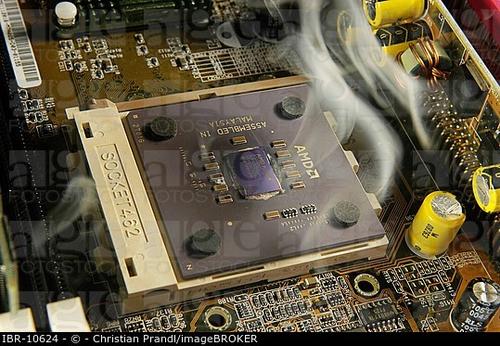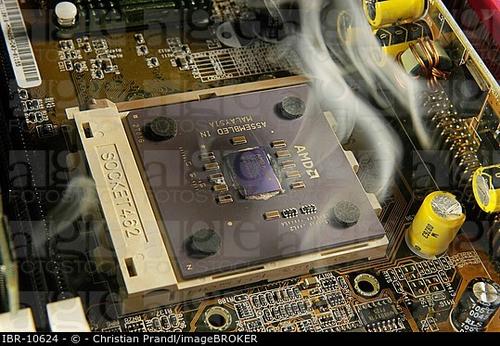What Finite Element Analysis Means to the Average Joe Engineer
December 26, 2015

Whether you call it simulation, finite element analysis, design verification, or many other names, in generations past it was a team of PhDs in a secret room who produced magical results and emerged from under the door every few months.
Today most design engineers have simulation tools at their fingertips, often in their CAD program of choice. Most PhDs trained in FEA would probably agree that the average Joe engineer should not attempt simulation and frown upon his attempts to analyze its results.
But is that fact or smokescreen?
The simulation tools available today, such as SolidWorks Simulation, are fully integrated into CAD packages so designer engineers can easily test their designs without having to go to an external application and on a huge learning curve that traditional FEA tools required.

The biggest advantage of a fully integrated simulation tool is that the analysis is based on your CAD geometry. This makes every step of the setup easier, especially the meshing process, which in the past was the bulk of work. (Boundary conditions are also applied directly to the CAD geometry.) When a design change is made, the setup and mesh are preserved, and the analysis can simply be re-run, and also at both the part and assembly levels.
When validating designs is this simple, it reduces the design engineer's dilemma of when in doubt, build it stout. You will probably not need to build as many prototypes.
There are several kinds of simulation that address a variety of questions. However, simulation is generally involved with answering some form of the question, "Will it break?"
Will it shake, rattle, or vibrate?
Structures with rotating equipment or electronics mounted to a chassis often pose this question to designers. Testing often involves building the structure and mounting it on a shaker table or constructing an overbuilt version for use in the field. Both cases invite occasional troubleshooting errors, and simulation then comes in handy.
Consider this modest example: A simple frequency study could help determine all possible natural frequencies of an object -- all the possible ways it might shake and bend. This data is generally based on the structure's mass and stiffness, and that information can be used to lay out an operating range.
Forced vibration continues where frequency left off.
If the object vibrates, shakes, or rattles, forced vibration answers the question, "Will it break?" Forced vibration usually involves random vibration. Road noise, seismic loading, and wind loading make up a large part of forced vibration.
We can test these using direct lab data or power spectral density input curves. However, impact testing or worst-case testing abilities also work; these usually come in the form of time-dependent force testing or harmonic analyses.
READ MORE DESIGN HARDWARE/SOFTWARE ARTICLES:
Is it hot enough? Is it cool enough? Will it overheat?
A great example of the importance of heat sinks is the smoke caused when a CPU fan is removed. There are myriad other examples, ranging from cooling ducts to radiators, but all have a couple of constants: something that has heat and something that is reducing that heat.
For heat analysis, computational fluid dynamics is the easiest way to get results.
CFD has traditionally been considered only for wind tunnels, streamlines, boundary layers, and the like. But it's also perfect for the three modes of heat transfer: conduction, convection, and radiation. With fluid flow already calculated in CFD analysis, the nontrivial calculation of convection becomes a breeze -- literally.
Plus, calculating view factors for radiation is a mess of angles and visible faces and material factors. CFD will do that for you, too, all behind the scenes.
For higher-end simulation, such as crash testing, combustion, and cavitation, those PhDs might be needed, though. However, the average Joe engineer can perform many levels of simulation to improve design quality and ultimately speed the development of new products by simply utilizing the simulation tools within many of today's CAD packages.
Corey Bower is manager of simulation at GoEngineer, which delivers software, technology, and expertise that enable companies to unlock design innovation and deliver better products faster. A mechanical engineer by training, Corey has been using SolidWorks for more than 10 years.
Like reading Design News? Then have our content delivered to your inbox every day by registering with DesignNews.com and signing up for Design News Daily plus our other e-newsletters. Register here!

Design engineers and professionals, the West Coast's most important design, innovation, and manufacturing event, Pacific Design & Manufacturing, is taking place in Anaheim, Feb. 9-11, 2016. A Design News event, Pacific Design & Manufacturing is your chance to meet qualified suppliers, get hands-on access to the latest technologies, be informed from a world-class conference program, and expand your network. (You might even meet a Design News editor.) Learn more about Pacific Design & Manufacturing here.
About the Author(s)
You May Also Like





